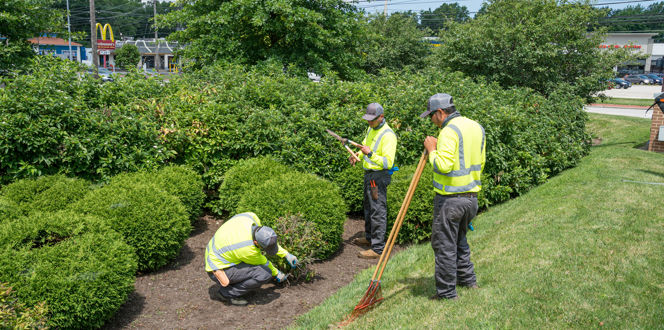Your trees are anchors on your property, framing your home, standing tall and strong, protecting you from the sun’s hot rays, and shielding you from the harshest winds.
As they get older, you might think trees don’t need any attention at all; they’ve got all their maintenance needs covered.
But, actually, mature trees need some love, too. Just like older humans, they can’t tolerate stress or injury as well as their younger counterparts. And this is also true when it comes to trimming them. Not only are their branches bigger and unwieldy, but you don’t want to risk creating a problem by weakening your tree with improper pruning.
Large tree pruning takes some finesse. Let’s look at some tips for pruning mature trees so you can keep your biggest leafy landscape components healthy.
When Should Mature Trees Be Pruned?
Trees stall growth, entering dormancy in winter. This usually begins in late fall and lasts through early spring or, in other words, after leaves turn brilliant colors and drop in autumn and before flowers emerge in early spring.
This inactive growth state, combined with cooler temperatures, less pest and disease pressure, and lack of leaves, creates the best time for mature tree trimming. The tree’s structure is more clearly visible and there is a greater chance of the tree recovering properly post-pruning.
How Often Should Mature Trees Be Trimmed?
When it comes to frequency of large tree pruning, a good goal is every 3 to 5 years. This ensures you’re giving the tree time to recover in between cuts.
However, trimming cycles are also dependent on your tree species, size, health, and any major storm events or incidents that weaken branches which then require pruning.
How Much of a Mature Tree Can I Trim?
Mature trees can suffer just as much as younger trees when they are over pruned.
If a tree loses too much of its canopy at once, it can weaken and even die from the excessive stress.
This is why when it comes to pruning mature trees, you never want to remove more than 25 percent of the canopy at one time. It's also important to remove dead or diseased branches remaining on the tree.
Hiring a certified arborist can certainly help get this job done properly and safely. Larger trees tend to have bigger branches that require special equipment and skills. A professional, trained arborist also has the expertise to know how much of the canopy to remove to ensure a tree can adequately recover.







